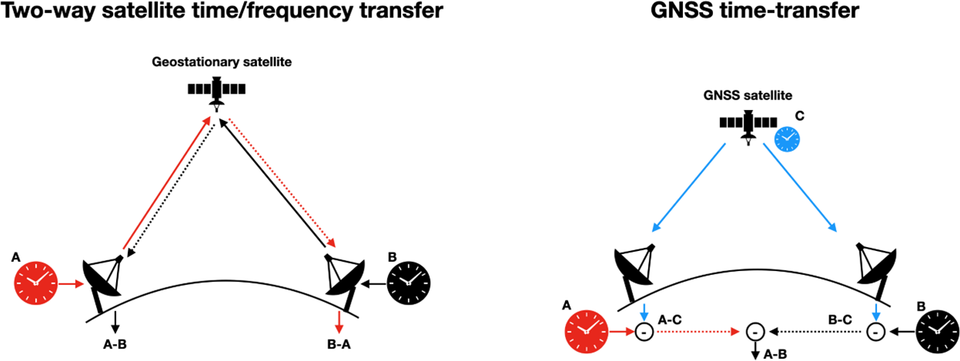GNSS and satellite time transfer
There are two established techniques for high resolution clock comparison over very long baselines on Earth. The first involves a direct two-way microwave communication link via a transponder located on a geo-stationary satellite, called two-way satellite time/frequency transfer (TWSTFT) or two-way time transfer (TWTT). The second amounts to an indirect comparison by exchanging measurements relating local clocks to simultaneously observed emissions from Global Navigation Satellite Systems (GNSS) like the Global Positioning System (GPS). Broadly, variations of this technique are known as GNSS common-view, GNSS all-in-view, or GNSS carrier-phase common-view time transfer. Importantly, the GNSS-based techniques only rely on the availability, not the time accuracy, of the on-orbit atomic clock signals.
NIST uses both TWSTFT and GNSS time transfer techniques to transmit UTC(NIST) reference signals to other national metrological laboratories and to contribute NIST atomic clocks to the ensemble comprising International Atomic Time (TAI). The GNSS common-view technique is used in NIST remote calibration services TMAS and FMAS. TWSTFT, which is independent from GNSS signals, has recently been made available as a remote calibration service.


